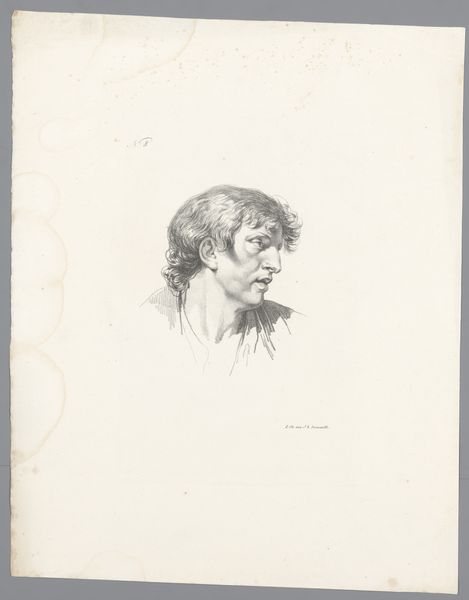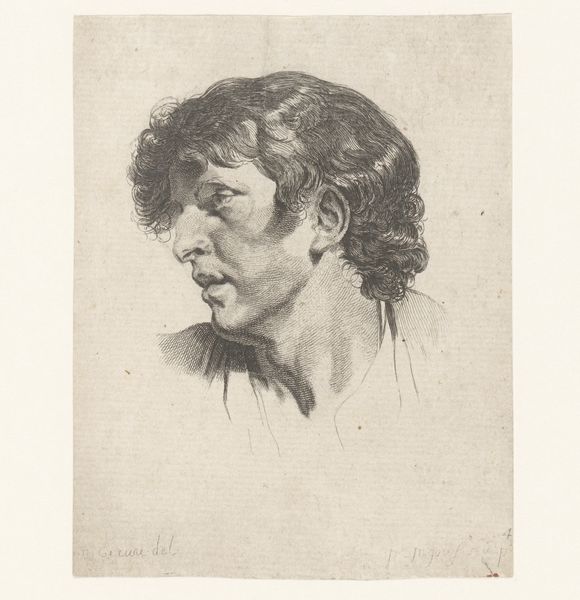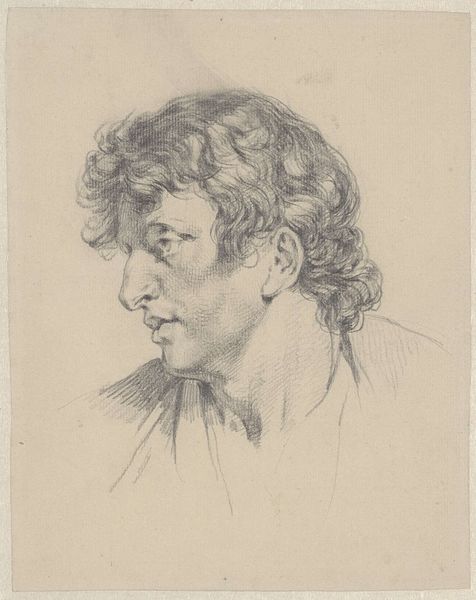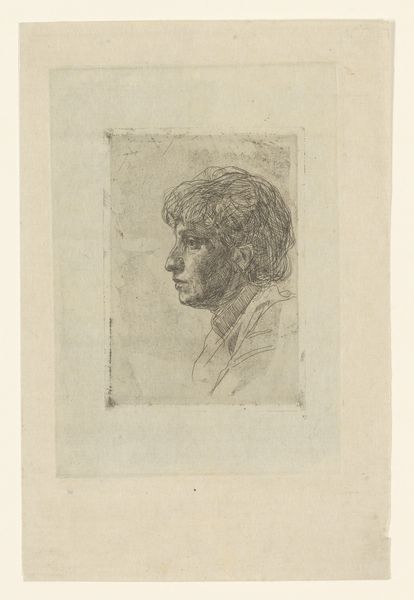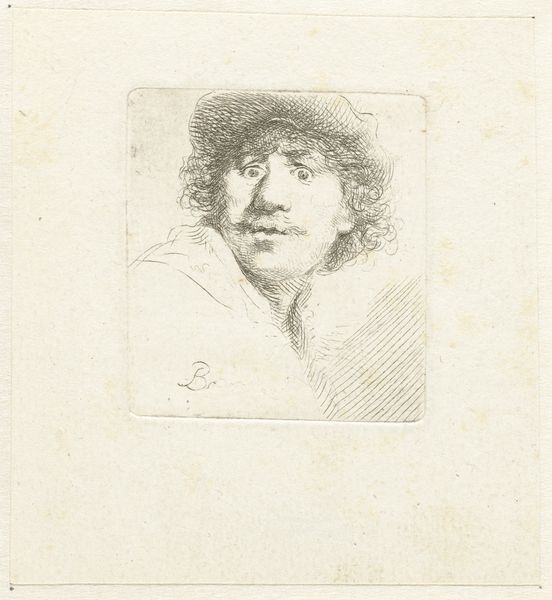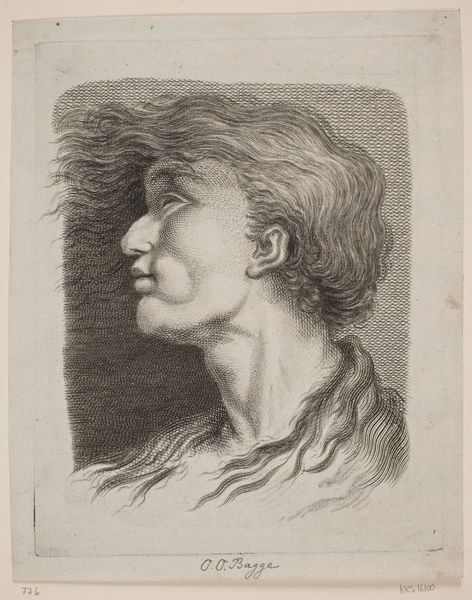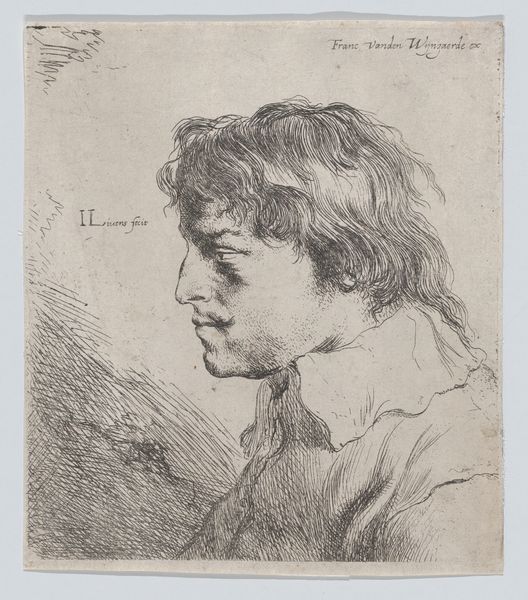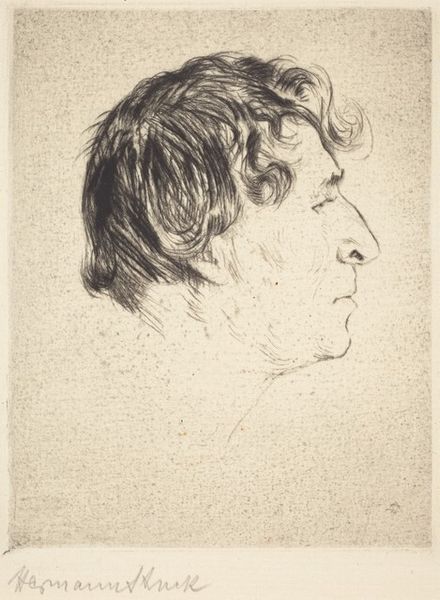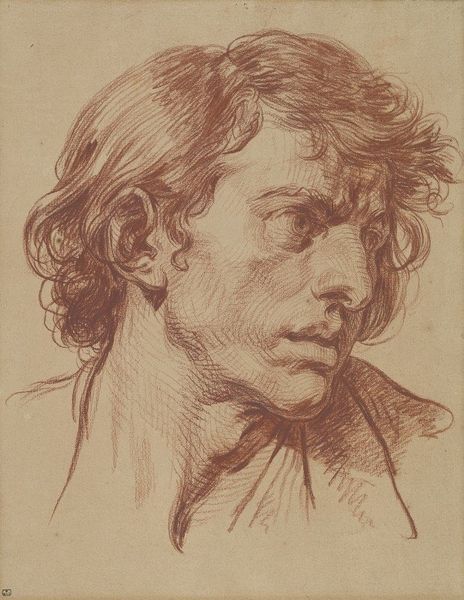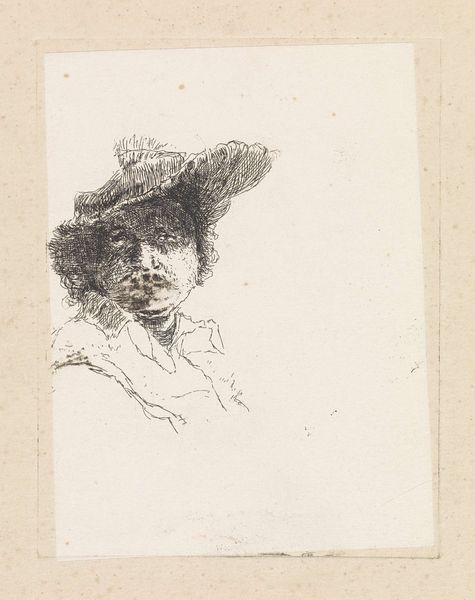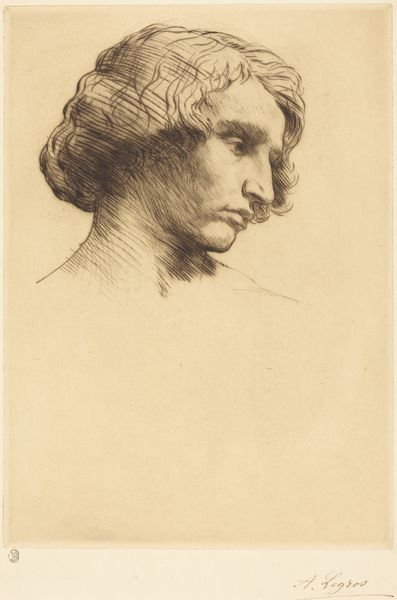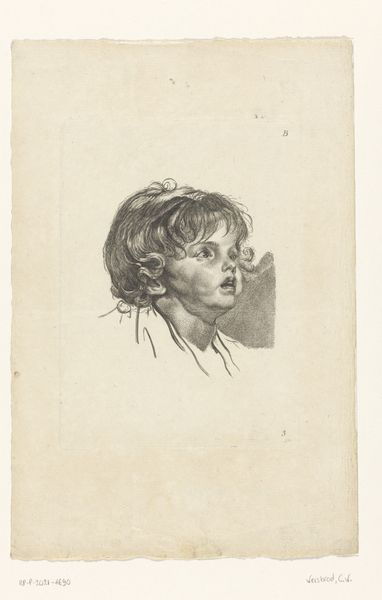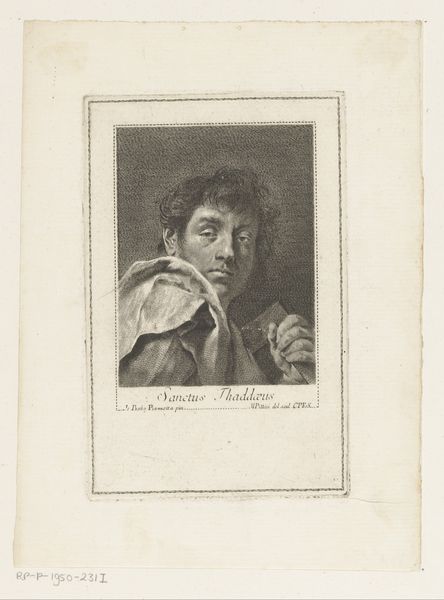
drawing, pencil, graphite
#
portrait
#
pencil drawn
#
drawing
#
neoclacissism
#
pencil sketch
#
pencil drawing
#
pencil
#
graphite
#
sketchbook drawing
#
pencil work
Dimensions: height 258 mm, width 163 mm, height 153 mm, width 118 mm
Copyright: Rijks Museum: Open Domain
Editor: So, here we have "Head of a Young Man, Turned to the Left," a drawing in graphite and pencil by Pierre Charles Ingouf, from around 1766. The striking shadows give it an almost sculptural feel, despite being on paper. What do you see in it? Curator: It's a fascinating piece. Considering its time, deeply entrenched in Neoclassicism, this work exemplifies a departure toward more humanistic representations, echoing the societal shifts happening then. Editor: How so? Curator: Well, Neoclassicism often idealized figures, emphasizing rationality and order. Yet, here, Ingouf captures a certain vulnerability, a psychological depth not typically seen in earlier classical depictions. It raises the question of who this young man was, and why Ingouf chose to portray him with such apparent sensitivity. This speaks to the growing interest in individual identity during the Enlightenment, doesn't it? Editor: Definitely. So, beyond just aesthetics, it reflects a changing world? Curator: Precisely. It hints at the broader social and intellectual movements where individuals began to assert themselves against traditional hierarchies. Art became a medium to explore human character, not just ideal forms. The museum, then still relatively new as a public institution, played a vital role in showcasing these shifting perspectives to a wider audience. How do you think audiences would have reacted to it? Editor: Probably a lot of varied responses, since individual emotion becomes important here. Curator: Exactly! And how radical was that idea at the time? Considering that this drawing could become an engraving available to a wider public, this may very well be the art world leaning more and more toward wider and democratic access. Editor: I hadn’t thought about it like that. Thanks! Curator: My pleasure, always happy to discuss art’s role within society and time.
Comments
No comments
Be the first to comment and join the conversation on the ultimate creative platform.
